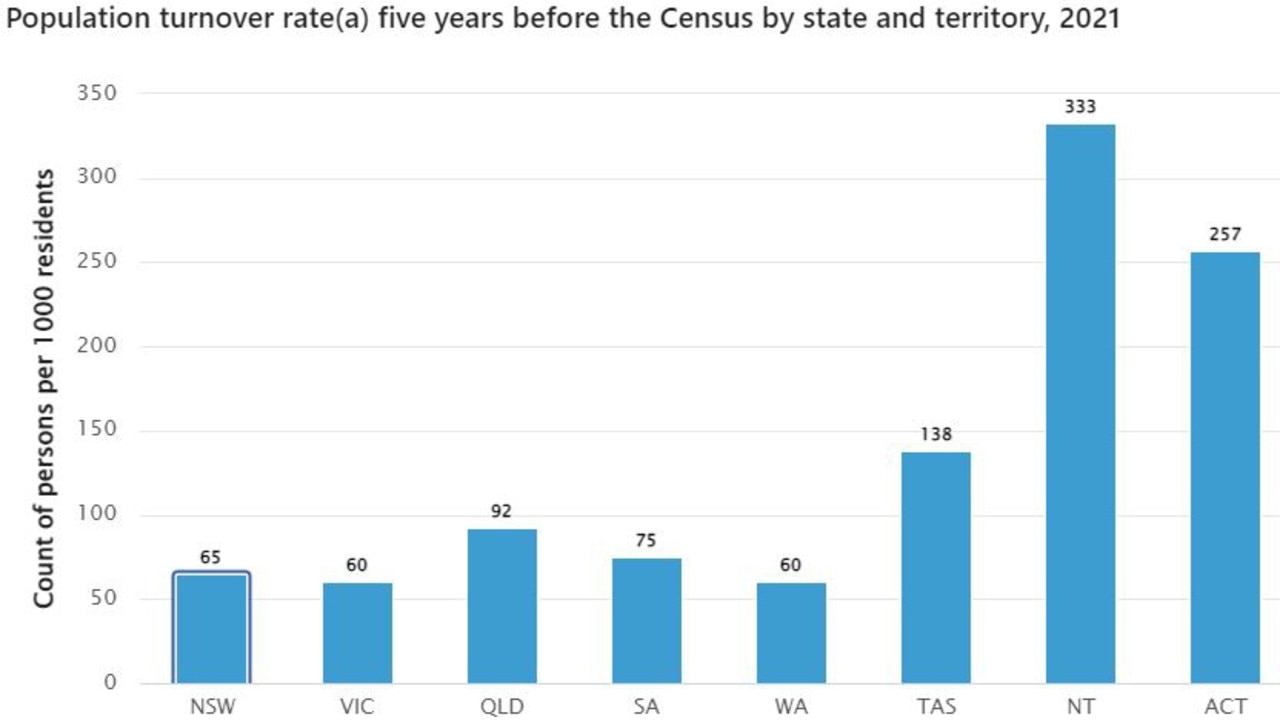The NT’s population turns over by one-third every five years, the highest in Australia
Every five years, one-third of the Territory’s population moves elsewhere. Find out why.
The Territory’s population turns over by one-third every five years, according to the Australian Bureau of Statistics (ABS).
The next closest was the ACT with 257 per 1000 and the lowest resident turnover was 60 in Victoria and Western Australia.
Even cold, boring Tasmania only turned over 138 residents per thousand over the previous five years.

A case study prepared by the ABS said resident age was a key factor in population turnover.
‘Between 2016 and 2021, the NT had the highest turnover rate of any state or territory,” the ABS said.
“This was despite a continual decline in its net migration over the past 15 years.
“Over the five years prior to 2021, the NT had a population turnover rate of 333 people per 1000 residents, which indicates that one in three NT residents aged five years and over were replaced as a result of interstate migration in this period.
“Those who arrived in the NT from a different state or territory were generally younger than those who departed.
Between 2016 and 2021, the median age of arrivals was 31 years compared to 34 years for departures.”
Demographer and speaker at next week’s Future Northern Territory – Towards 2030 business lunch Simon Kuestenmacher said youth was the major factor behind high turnover but said there was a solution.

“The Northern Territory has heaps of people in their 20s and 30s and heaps fewer people in the 50-plus cohort,” Mr Kuestenmacher said.
“Young people move around left, right and centre and if a young town, you’re a transitory town.
“You have a relatively high share of the population as international students and they are a stable chunk of the population but this chunk turnover every four years at best – some may only stay for a semester – so that creates huge turnover.
“And of course all those young folks in their 20s and 30s are probably here for the adventure stage of the life cycle and once it becomes time to settle down raise kids they might go back to wherever their home state is.
“Also you have a Defence presence in the Territory and they can also turn around a bit so it doesn’t necessarily speak about the town, rather it’s a direct reflection of the age profile that you operate in.”

As well as growing the economy to $40bn by 2030, the Territory Government also wants to increase population from just over 250,000 to 300,000 over the same time frame.
Mr Kuestenmacher said the strong economy meant there were up to 8000 unfilled jobs in the Territory that could provide a long-term boost to population.
“It means the growth potential is there but how do you make the most of this potential?,” he said.
“Housing is a cornerstone problem that no region in Australia has solved. If you were to be the first region to solve it, to be bold enough to actually provide and build housing for key workers, low income workers housing that is actually affordable you would get the workers.
“That’s the make it or break it event if you want population growth.”





